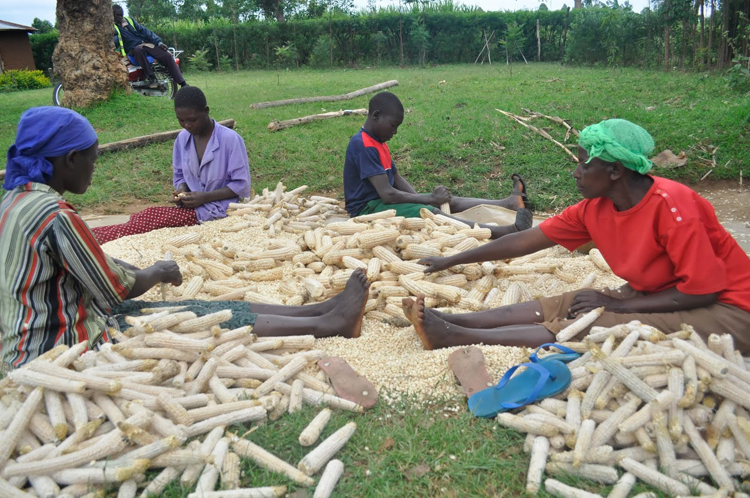Smallholder farmers in Kenya’s bread basket of Uasin Gishu are counting losses as the heavy rains that pounded the area just before harvesting began has affected the quality of produce in their farms. Most of the cereals have been lost due to rotting and swelling. Consequently, most of the produce cannot meet the threshold set by the National Cereals and Produce Board.
Related article: Alfasafe protects your maize from deadly aflatoxin
Every day, millions of Kenyans are consuming maize in various meals. Githeri, Ugali, maize flour cakes, Uji (porridge) are just among few delicacies prepared from maize crop. The rotting maize therefore means there will be low produce to be put on the table for Kenyan families.

Farmers drying maize in preparation for sale
In 2016, the Kenya’s National Cereals and Produce Board (NCPB) issued a directive to all of its depots across the North-Rift Region not to accept maize that has moisture content of below 13.5 percent. Anything above this limit is considered unsafe for human consumption and therefore rejected at the point of sale. The grain growers want the government to make an exemption this time and relax the limit for moisture content.
Related article:Maize Nixtamalization reduces aflatoxin by 60-70%
Some farmers in the region finished harvesting their maize a week ago and now drying it before delivery to NCPB, but the big challenge is that their maize has high moisture content which will hamper the marketing of their yields. The rains also mean the farmers who depend on the sun to dry their grains are facing challenges as there is no enough sunlight.
One of the farmers, Francis Cheruiyot says after sorting his harvested maize before shelling, he found out that only half of them were fit with the rest having rotted in the farm. The rot is not only eating away the maize but also the returns. Cheruiyot who expected to sell 120 bags of maize will now have to contend with selling only about 50 as he still has to set aside some for subsistence consumption.
Related article:Doom for Smallholder Farmers as Kenya’s Maize Production set to drop in 2017
It is projected that 37.9 million bags of maize, majority of these from smallholder farmers will be realized from both the long and short rains in 2017. This represents a decline of 4.4 % of the long term average (LTA) of 40 million bags and a slight increase from the 36.9 million bags realized in 2016. The decline in overall production was attributed to reduction in area under maize by 5.1%, late rainfall onset coupled with long dried spells mid-season and Fall Army Worm invasion.
The Kenyan government is currently buying maize from farmers at Sh. 3200 per 90 kg bag as compared to Sh. 3000 in 2016, a slight increase of 6.7%.
















Comments powered by CComment